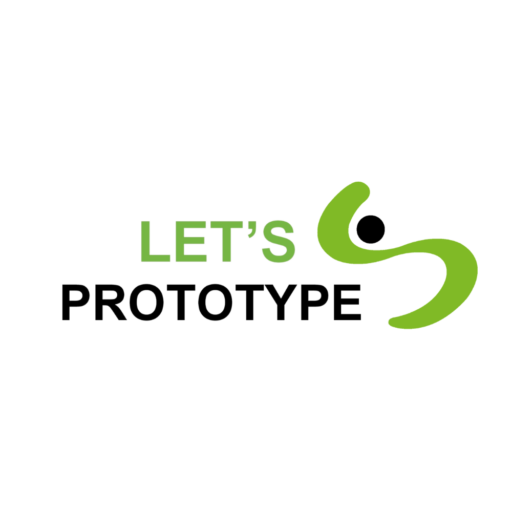ESP-IDF vs Arduino: Which Is Better for IoT Products?
ESP–IDF is a programming framework useful for developing the software side of IoT products. As we’ve explained on other occasions, wearable devices and other smart electronic devices require both an electronic hardware solution and a software one to enable their functions.
The control software for these devices, also known as firmware, has the main objective of managing the interaction between electronic components and peripherals, making it possible to test business logic and use cases.
For example, an air conditioner that can be controlled from a mobile phone, from anywhere in the world, requires hardware managed by software that handles the device's internet communications, signals, received commands, and more.
Key Definitions to Understand the Advantages and Disadvantages of the ESP-IDF Framework
What is high-level programming?
High-level programming refers to software development that is further removed from the hardware. The more abstracted the software is from direct control of electronic components, the “higher” its level is considered to be.
What is low-level programming?
Low-level programming or low-level software does not mean it is simpler or requires fewer skills from the professionals who develop it. On the contrary, low-level refers to software that controls the components and peripherals of electronic hardware with precise detail.
What is a framework?
A framework is a programming environment that provides developers with libraries, software security rules, structures, and best practices, all of which contribute to the ease and quality of the resulting products. Both Arduino and ESP–IDF can be identified as frameworks.
Best Frameworks for IoT Product Development
Both Arduino and ESP-IDF are programming environments used to develop applications that control the operation of smart electronic products. The main difference between ESP-IDF and Arduino lies in the level of depth they offer when controlling the electronic elements that make up the product.
Arduino Framework: Main Advantages and Disadvantages
Arduino is a programming environment that originated in Italy in 2005. It is the framework that has provided the greatest accessibility for programming logic in electronic inventions. The framework itself has a large community of developers who share solutions and provide answers to common and useful problems.
Arduino is an environment for creating electronic control software and hardware elements that operates at a high level. The level at which electronic control is programmed with Arduino presents significant limitations when it comes to customizing the behavior of certain physical components.
Disadvantages of Arduino
Firmware development (control software) in Arduino is faster and more “superficial” compared to other control logic programming frameworks for smart devices. Since it is a framework designed for rapid prototyping and educational purposes, it prioritizes the ability to control a vast catalog of electronic components in advance.
Without oversimplifying too much, we can think of an electronic circuit that can be assembled like a Lego set, where all the pieces are fully compatible and controlled by basic software capable of communicating with each of them.
Firmware developed with Arduino is built on this foundation, making it a form of electronic programming at a much higher level compared to other frameworks or programming environments, such as ESP-IDF.
The limitations of Arduino can also be seen as advantages, especially when the goal is to validate hypotheses, build a quick prototype, demonstrate the functionality of a circuit, or showcase features in an MVP to secure funding.
Advantages of Arduino
- Minimizes development time
- Requires less specialized professional profiles
- Does not require in-depth knowledge of electronics
- Allows leveraging third-party developments
- Has a large community for finding and sharing solutions
ESP-IDF Framework: Advantages and Disadvantages
ESP-IDF is the official framework for developing control software when working with microcontrollers from the ESP32 family.
As is well known, ESP32 controllers have become the most widely adopted microcontrollers for functional prototype development. Their versatility and wide range of capabilities make them ideal for creating electronic inventions.
The capabilities of ESP32 microcontrollers have opened new doors in IoT prototyping, as they are compatible with a wide range of electronic components. In addition, the control software used to define their functions can be developed using both Arduino and ESP-IDF.
While it’s true that Arduino offers fast development and benefits from a large community of libraries, ESP-IDF is the only environment that allows full customization and fine-tuning of the behavior of any electronic component.
Advantages of ESP-IDF
It is possible to maximize security measures over communication protocols.
Allows control and optimization of the power consumption system, including programmed deep sleep modes to improve battery life.
Allows better control and utilization of processing power and hardware memory capacity.
An active developer community that shares experiences in an organized manner.
Enables highly efficient control over task execution order, improving both user experience and the optimization of limited physical resources.
Improves the ability to control firmware update procedures remotely through OTA methods.
Limitations or Disadvantages of the ESP-IDF Framework
The number of expert professionals is significantly lower compared to platforms like Arduino.
The learning curve for developing in its environment is much less intuitive compared to others like Arduino.
Identifying errors, correcting them, and accessing documentation is much more complex than in Arduino-based development.
According to our experience, there has been a certain disconnect between its versions, which could affect the continuity and evolution of projects.
Which is better: ESP-IDF or Arduino?
Arduino is more suitable for developing electronic software aimed at testing hypotheses and validating functions through prototypes. The transition from prototypes to industrial products, where energy optimization and communication security are critical, may require developing the logic in ESP-IDF.
